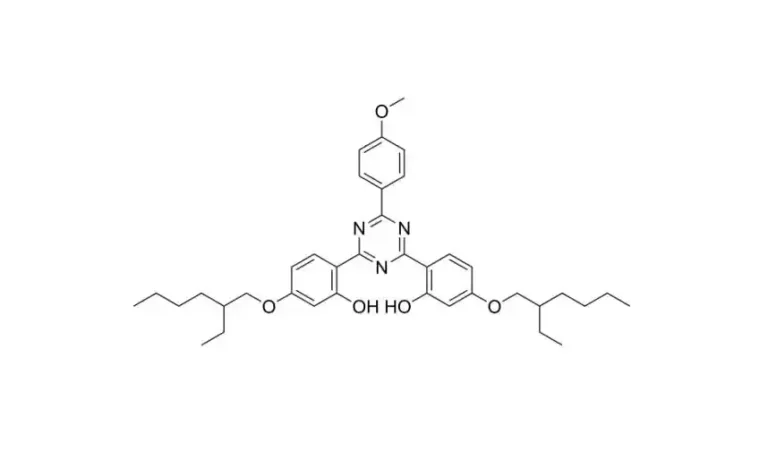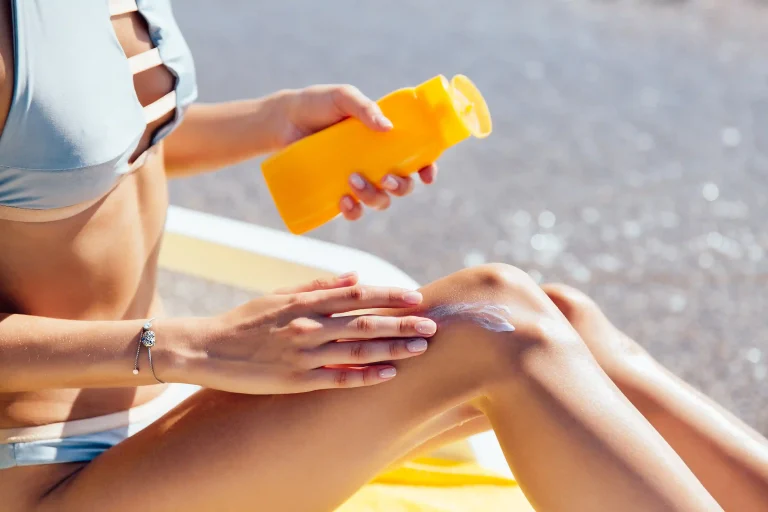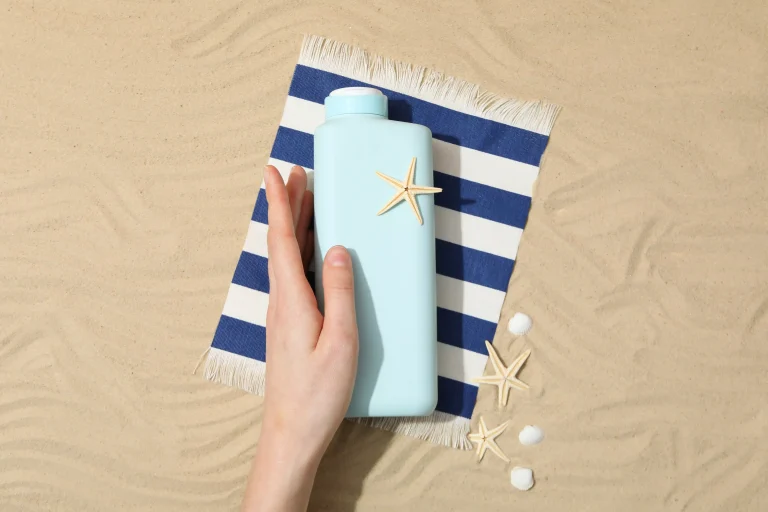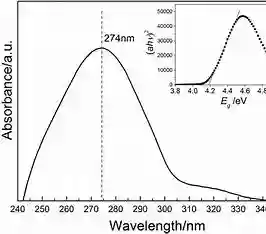The best sunscreen for most people comes down mainly to the ingredients. In this blog, we will take a closer look at those two main mineral-based UV filters, titanium dioxide and zinc oxide, so you can make the right choice toward better sun protection.
What are the Major Differences Between Titanium Dioxide and Zinc Oxide in Sunscreens?
In choosing the ideal sunscreen, it will be crucial to understand what differentiates titanium dioxide from zinc oxide. Both are inorganic ultrafine UV radiation mineral-based broad protection filters, although their differences will certainly make either one better for you, depending on your exact needs.
Composition and Properties
Titanium dioxide is an inorganic UV filter that may absorb, reflect, and refract UVB and a portion of UVA light. It typically undergoes coating with reagents like Aluminum Hydroxide and Lauric acid to render it more hydrophobic for application in oil-based formulation systems. The coating further assists in the achievement of a light, smooth, and shiny skin feel. However, zinc oxide is a physical UV filter agent in itself that offers the same broad-spectrum protection but enjoys greater stability in formulation due to its natural attributes.
UV Protection Capabilities
It so happens that both zinc oxide and titanium dioxide have been popular for their excellent potential in preventing harmful UV radiation. Apart from this, titanium dioxide has high visible light transmittance, presenting an outstanding UVB and partial UVA light screen. For this reason, it may remain a top choice in formulations where protection and esthetics are required. Zinc oxide has a reputation for a little wider protection band for UVA rays.
Skin Safety and Compatibility
Neither ingredient is irritating, and both are generally considered compatible with the skin. Naturally inert, harmless, and nontoxic, titanium dioxide is, in general, allowed for even sensitive skin. Zinc oxide embraces the same safety profiles but is, in general, preferred upon makeup creation for very sensitive or even damaged skins because it also soothes.
How Does Titanium Dioxide Protect Skin from UV Rays?
This is a major constituent in sunscreens due to its ability to protect the skin from harmful UV radiation quite well.
Suns Protection Efficiency
BPF-T10AHL, among other products, utilize the potential of titanium dioxide, which absorbs, reflects, and refracts UVB and a portion of the UVA radiation, hence offering high protection from the sun. The mineral assure effectiveness because it forms a physical barrier on the skin surface, which prevents these harmful rays from entering.
Application and Aesthetic Appeal
In most cases, titanium dioxide sunscreens are favored because of their aesthetic appeal when applied. Coating with Aluminum Hydroxide and Lauric acid typically imparts a light, smooth, and shiny skin feel to products, enhancing user experience through its minimization of the whitening effect inherent in mineral sunscreens.
How Does the Use of Zinc Oxide Rate in Sunscreens?
It remains a staple ingredient in most sunscreen products because it consistently performs well in many ways.
Sun Protection Efficiency
Zinc oxide gives broad-spectrum protection by reflecting both UVA and UVB radiation away from the skin. As a sunblock, its performance is well documented and often an essential ingredient in any formulation that requires comprehensive sun protection.
User Experience and Application
From a user experience perspective, zinc oxide can sometimes appear as a visible white blotch on the skin due to larger particle size compared to nano-sized titanium dioxide particles. This particular issue has significantly improved with the advancement of formulation technology, though.
What are the Benefits of Titanium Dioxide?
There are various advantages of titanium dioxide that make it widely used in sunscreens.
Non-comedogenic
Another big plus with this ingredient is that it does not clog pores; it is non-comedogenic, hence does not cause acne breakouts. This also goes a long way in making it ideal for oily or acne-prone skins that need effective sun protection but do not want to influence their skins in any form whatsoever.
Gentle on Skin
Safety profiles of titanium dioxide pinpoint the fact that this indeed is an inert and non-toxic substance, which renders it gentle to the skin, bar sensitivity complications. With sunscreens, it guarantees that one is well-protected against the sun sans irritations or adverse effects.
By knowing these differences of zinc oxide to titanium dioxide in sunscreens, you will be able to choose which one will work best for you on your skin problems and yet pass all the criteria for good sun protection.
Why Use BFP-W300TSA as a Good Source of Whitening Powders?
Among a wide field of possible titanium dioxide products that you may apply in skincare products, BFP-W300TSA is one type on which one may rely due to the unique properties and application areas that it provides. The specific product aims to maximize the performance of sunscreens and other skincare products with a specially designed composition.
Benefits of BFP-W300TSA
Certain advantages of BFP-W300TSA may make this an excellent option for formulators:
- Hydrophilic coating: The product is coated with Alumina and Silica for better compatibility in water-based products. Because of this, it can inhibit uneven dispersion of titanium dioxide and allow for even sun protection on the skin.
- Skin-Friendly Characteristics: BFP-W300TSA is hydrophilic, ensuring a smooth application that allows the skin to breathe, hence giving a dry and clear protective film. This characteristic plays an important role in product development regarding wear comfort and is unponderous on the skin.
- Improved UV Protection: Physical barrier formation on the skin surface by BFP-W300TSA effectively keeps the injurious UV radiation at bay. It works by absorbing, reflecting, and refracting UVB and part of UVA and, hence, sees wide applicability in sunscreens.
Skincare Product Applications
BFP-W300TSA does not have an application limited to just sunscreens:
- Skin Whitening Products: Characteristics make it feasible for whitening creams and lotions where a brightening effect is required.
- Foundation Formulations: Since powdered forms even out skin aesthetics, it becomes ideal for foundation formulations that require giving the skin double performance in terms of protection against UV damage and coverage.
- Anti-aging Products: While it provides very high protection from the sun, hence inhibiting the probable early aging of the skin by UV exposure, BFP-W300TSA finds application in anti-aging skin care lines.
Conclusion: Why Titanium Dioxide is the Better Choice for Sunscreen
It has also made titanium dioxide one of the primary choices for sunscreens due to the benefits provided by this compound: a very effective protector against the sun, yet very gentle on the skin, and thus appropriate for a wide range of skin-care applications. Products like BFP-W300TSA avail you of sophisticated formulations that not only enhance protection but also make such products easier to use.
Frequently Asked Questions about Titanium Dioxide and Zinc Oxide in Sunscreens
Is titanium dioxide safe for sensitive skin?
Yes, titanium dioxide is safe for sensitive skin. Titanium dioxide can be termed inherently inert, safe, and nontoxic; it is acceptable even for sensitive individuals.
Does zinc oxide give complete sun protection by itself?
Zinc oxide gives broad-spectrum protection by the physical reflection of UVA and UVB radiation away from the skin. But when in a combination formulation, it is more effective at giving complete sun protection.
Do the sunscreens that contain titanium dioxide leave a white residue?
Sunscreens based on titanium dioxide may leave a residue due to their mineral nature. However, with advancement in the formulation technology, such effect is by and large reduced, especially when nano-sized particles, or with special coatings-as for example in the products like BFP-T10AHL-are used.














